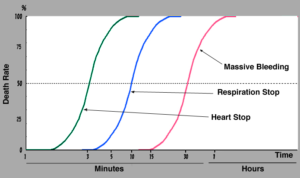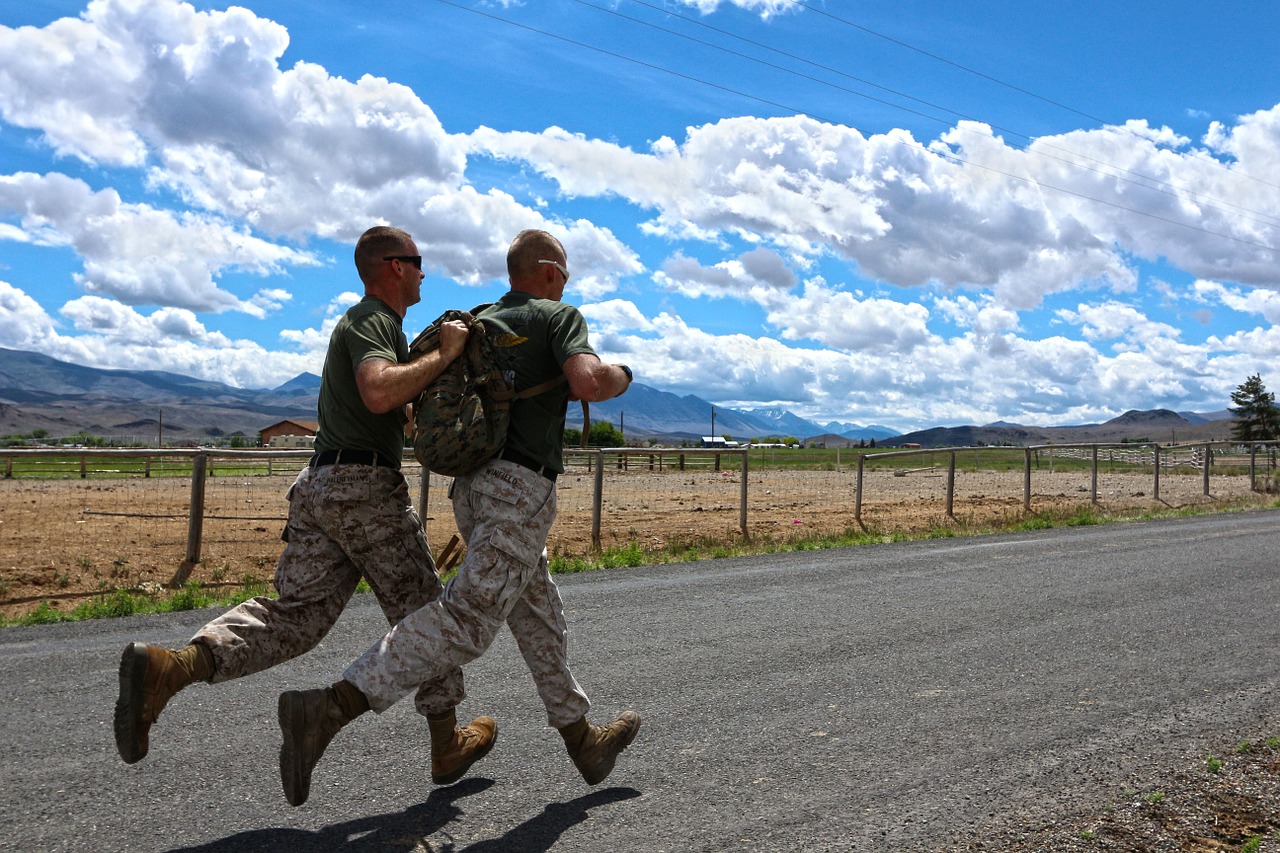Guest article from tackleberrysolutions.com
The #1 Rule for Self-Care During Wartime
The most important part of your mental and physical wellbeing during a time of war or SHTF is prevention. It goes without saying that it is much easier to prevent and avoid an illness or an injury than it is to try and recover from one.
During my time in the army I’ve seen and experienced many ailments that could have easily been avoided. Many of these resulted in a lot of pain for recovery despite access to modern day healthcare. I’ve seen something as simple as a shaving cut lead to emergency surgery. This man was fortunate to have access to such treatments. Had help been further away or unavailable, he most certainly would have died.
The following content is taken directly from my Medical Trauma Care book 5 from the QRF series and features 6 commonly overlooked ailments that can easily be avoided.
Self-Care #1 – Dehydration
Believe this or not, in a combat situation, what stops most soldiers is forgetting to drink water. Can’t tell y’all how many guys I’ve had to give IV fluids to because they thought that drinking nothing but Gatorade was going to keep them hydrated. The ratio we used for drinking fluids was 2 liters of water to 20 ounces of Gatorade.
Signs/Symptoms: Not peeing or having very dark and smelly pee, dry skin when they should be sweating, dizziness, rapid heartbeat, rapid and shallow breathing, sunken eyes, lack of energy, confusion, irritability, and fainting (It’s at this point you will have to use the “Ranger IV” as more often than not the veins have collapsed by now.)
Treatment: A homemade IV consisting of 60% water, 15% sugar, 15% salt. Drinking will work if you can’t administer it through veins. In severe cases, a “Ranger IV” is necessary. Stick the drinking line from the camelback up the rectum about 6” (Be sure to use Vaseline or some other form of lubricant). Slowly push the water out of the camelback, through the drinking line, and into the colon. If the water starts to come out of the butt, then slow your speed. You must give the colon enough time to absorb the water. This is the fastest way to rehydrate someone.
Self-Care #2 – Ingrown Toenail
I personally have had 4 of these. It is as simple as not cutting your nails properly. Make sure your guys cut straight across. An ingrown nail can be a real show stopper, especially if it goes unchecked. It will get infected and gangrene can result.
Signs/Symptoms: Consistent pain in corner of toe, painful to the touch, redness , swelling, and bleeding.
Treatment: No way around this. You’re going to have to cut out the excess nail. It’s going to hurt like hell, so if you can numb the toe then do it. Control the bleeding and remember to be clean. Scrub the open wound with Iodine or alcohol, then apply triple anti-bacterial cream and wrap it up good.
Self-Care #3 – Jungle Rot (Athlete’s Foot)
Predominantly seen during the Vietnam War, it is very commonly contracted when your feet never fully dry out and remain in boots for far too long. It starts as athlete’s foot and because it goes untreated, grows into full fledge foot rot. Basically, it’s a serious fungus that can turn into gangrene. If you don’t have any anti-fungal cream to put on it, and the athlete’s foot continues to get worse, there is a combination of treatment I have used myself in the field to combat athlete’s foot and prevent trench foot (jungle rot).
Signs/Symptoms: Advanced trench foot often involves blisters and open sores, which lead to fungal infections; trench foot includes a tingling and/or itching sensation, pain, swelling, cold and blotchy skin, numbness, and a prickly or heavy feeling in the foot. The foot may be red, dry, and painful after it becomes warm. Blisters may form, followed by skin and tissue dying and falling off.
Treatment: Urine is technically sterile. While I wouldn’t use it to clean instruments or pour onto an open wound, it can be used to stop athlete’s foot and prevent jungle rot. Simply pee on your own feet and directly on the spot of infection. But don’t stop there, apple cider vinegar will do amazing things, if used properly. After the urine dries, soak your feet in apple cider vinegar and it will kill everything (vinegar is a powerful disinfectant.) Then apply an anti-fungal cream. The goal here is to catch the problem before it becomes jungle rot. Once it has gotten to that level, it’s going to need some real treatment and antibiotics. Thus you will have to go to an actual doctor as they will need to remove the dead skin to treat the foot.
Self-Care #4 – Jock Itch
I got this one year after working long hours in intense heat. I was sweating way too much and not able to cool off my crotch, and that’s all it takes. Jock Itch is basically athlete’s foot in the groin. It is especially painful to females as it can also lead to other issues.
Signs/Symptoms: Redness, persistent itching, burning sensation, flaking, peeling, or cracking skin, rash that gets worse with exercise or activity, changes in skin color in affected area, rash that doesn’t improve or spreads with over-the-counter hydrocortisone (anti-itch) cream.
Treatment: Shave the infected area, the hair can hold in dirt. Wash the area thoroughly then pour apple cider vinegar over the infected area. This is going to smart a little bit, but that just means it’s working. Then cover the area with anti-fungal cream (Mix Tinactin, Gold Bond, and Destine [with zinc] together. They are known as the deadly trio for fungus and are used on babies to combat diaper rash ) then cover that with Vaseline. Be sure to clean and retreat the infected area 2-3 times a day and watch your sweating.
Oh, one other fun fact about jock itch, once you get it …it comes back easier the next time. So you need to be on the guard for it. When you feel it coming on again, then you need to pour on the vinegar and it will kill it if you hit it early enough. Also your urine will help here too. DON’T pour ammonia on the wound.
Self-Care #5 – Diarrhea/Dysentery
Now for the fun stuff, Poop! Yeah, believe it or not, this is pretty stinking serious. Diarrhea can lead quickly to dehydration and death. Dysentery is just diarrhea on freaking steroids. Keep some Pepto-Bismol on hand. This will help with the diarrhea. Basically, what is happening is your body thinks you have ingested poison, thus it is doing a controlled dump. (Although Dysentery is an uncontrolled dump of the stomach’s contents.)
Signs/Symptoms: Really, do I need to spell this out?…Diarrhea = runny or watery poop with little to no warning or control. Dysentery = everything comes out all at once and you ain’t controlling anything. Good luck and hope you got a set of fresh boots and pants nearby.
Treatment: If it’s Diarrhea, then allow the body to continue to flush its system up to 24 hours. Drinking lots of water and getting a lot of sleep will fix it the fastest. If the body continues to have issues, then use the Pepto-Bismol to clog the drain. If it still persists, then you’ve got bigger issues and need to go get fully checked out.
Dysentery is another story. If you have ever had food poisoning, then that’s what this is. It’s most often caused by eating with poop residue on your hands. This is very dangerous as it will dehydrate the body stupid quick. The Ranger IV will not work as the colon has completely shut down. So get an IV line in the arm as quick as you can. You’re going to need to pump some serious fluids. Don’t even mess around with this. Get to a doctor as quickly as you can. In the meantime, drink as much water as you can stand.
The Golden Hour
On a note for emergency situations, remember the golden hour. The “Golden Hour” is a concept that was created by R Adams Cowley, a military surgeon. It states that if you can get an injured person treatment within 1 hour, that they have a higher chance of making a full recovery. The chart below was used to prove the golden hour theory. It is because of his efforts, that we have the EMS and Combat Medics systems we do today.

Picture Reference: https://commons.wikimedia.org/w/index.php?curid=18405924
In the recent War on Terror, medics found that if they could train every soldier on their team CLS (Combat Live Saver.) That even if they themselves couldn’t get to the injured soldier, that the injured soldier could self treat or receive treatment from a fellow soldier. The result was that more men survived their wounds than died from them.
Also something else was learned. Men that were injured with “Non-Live Sustaining Injuries” (You will learn about that in triaging) were still making it. Now soldiers were surviving even when they were not supposed to. This is all due to the advancements found in the medical field, and treatment within the golden hour. Unfortunately, what has not been documented is the innumerable times that a medic has saved a soldier’s life or spared them greater suffering through preventative medicine and avoiding the ailment in the first place.


